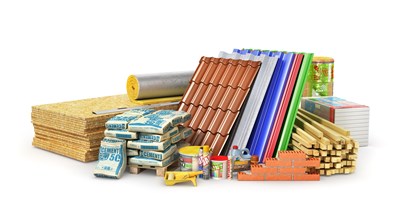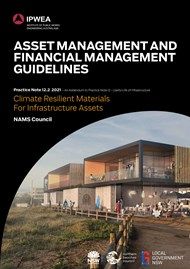
IPWEA guidelines deliver climate resilience to infrastructure
This week we are proud to recognise the launch of an important climate change resilience guide for asset owners and managers.
11 November 2021
Climate change is the challenge of our time. This has been made clear through the recently released IPCC AR6 and the proceedings at COP26. BMT, IPWEA, Northern Beaches and Dubbo Regional Councils have collaborated to deliver a guide that will help asset owners and managers to select materials that suit their objectives, and which will be more resilient to climate change effects.
Climate change is affecting the intended lives of many assets as a result of the materials that have been used. This is having implications for maintenance (costs and effort) and insurance. BMT has worked together with colleagues at Northern Beaches Council, Dubbo Council, IPWEA, the University of Sydney and the University of Technology Sydney (UTS) to develop new national guidelines regarding climate resilient materials. The new guidelines, known as IPWEA 12.2: Climate Resilient Materials for Infrastructure Assets (PN 12.2), were released this week by the Institute of Public Works Engineering Australasia (IPWEA). They build on the previous IPWEA Practice Note 12.1: Climate Change Impacts on the Useful Life of Infrastructure (PN 12.1), which was released in 2018.
The new guidelines focus on the suitability and sustainability of the most common construction materials used in asset rebuilding or renewal projects.
 These are concrete, steel, bitumen, wood and PVC. They present innovative solutions and practices to increase resilience for a range of natural hazards that will intensify due to climate change. They can be used for new construction and for asset life-extension works.
These are concrete, steel, bitumen, wood and PVC. They present innovative solutions and practices to increase resilience for a range of natural hazards that will intensify due to climate change. They can be used for new construction and for asset life-extension works.
The guide:
A key aspect of the guide is a decision tree which is aimed at helping users select options that best suit their needs. We made a significant effort to ensure the usability of the information in the guide and the decision tree and included user testing with a number of councils in NSW. A peer review process managed by IPWEA helped to fine tune the guide.
 This national guideline will provide Australian local governments with information regarding resilient construction materials and provides a decision pathway for their selection and use. The project highlights the valuable outcomes that can be achieved through partnerships between consultants, academia, practitioners and industry bodies.
This national guideline will provide Australian local governments with information regarding resilient construction materials and provides a decision pathway for their selection and use. The project highlights the valuable outcomes that can be achieved through partnerships between consultants, academia, practitioners and industry bodies.
You can find out more or purchase the E-Book here: https://www.ipwea.org/publications/ipweabookshop/pn12-2

20 December 2022
BMT positions for further growth of climate risk & resilience capabilities in region. Ian is a translator, facilitator, innovator and strategist.

8 August 2022
We are pleased to announce Jaret Fattori has joined BMT in Canada to lead the development of the North American Climate and Environment team.

3 November 2021
When operations at ports and harbours are disrupted, the knock-on effects are not just noticeable, they can be disastrous across the supply chain, let alone on the companies and consumers who rely on shipping to deliver more than 90% of the world’s goods.

7 October 2021
BMT grows its climate and environment capability worldwide by appointing a Global Lead for Climate Risk and Resilience.